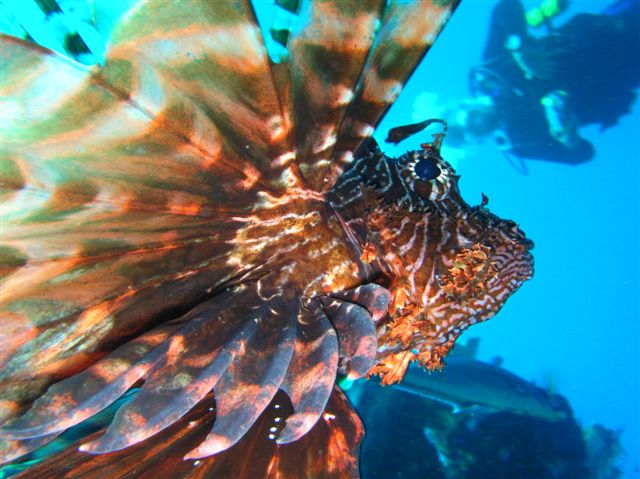The Fiji Islands make a perfect tropical holiday destination to explore. The beautiful beaches and the stunning coral reefs welcome everyone who wants to swim, snorkel or scuba dive under its turquoise waters.
You can see a lot underwater, the sea is teeming with life. Creatures in all shapes and colors, large and small may be encountered. Most people would immediately think of sharks when it comes to dangerous animals in Fiji.
But the really dangerous animals in Fiji are the small animals that are barely noticeable, ones that are camouflaged so that you hardly see them. But even among these, most are harmless if you follow a few basic rules. They are dangerous only when you don’t see them and accidentally touch or step on them.
The golden rule is: Don’t touch anything, especially don’t touch anything you don’t know. Otherwise, a nasty sting can repay the favor.
Bluebottle Jellyfish

The jellyfish-like Bluebottle, aka Pacific Man of War (Physalia physalis and Physalia utriculus), are aquatic cnidarians (stinging animal) that belong to the order of the Hydrozoa.
Bluebottle gelly fish are quite easy to recognize by the characteristic bluish gas sac (pneumatophore), which gives the animal buoyancy so that it floats on the water’s surface.
It’s up to 2-meter-long tentacles hanging into the water, which contain a potent venom that the creature uses to catch small prey.
Sometimes, the winds and currents may lead them to shallow waters and the beach, where they make for a rare but unwelcome encounter for people. The stinging cells in its tentacles trigger severe pain when touched, and wheals form on the skin. In the worst case, it can also become dangerous when an allergic shock occurs.
Although their bright blue color gives them away from afar, and if you’re lucky you can see the Bluebottle in time before you have contact with your tentacles. However, it should be mentioned that it is quite possible that the tentacles tear off and float freely in the water. The stinging cells can still be active for days and can cause injuries.
Crown of Thorns Starfish
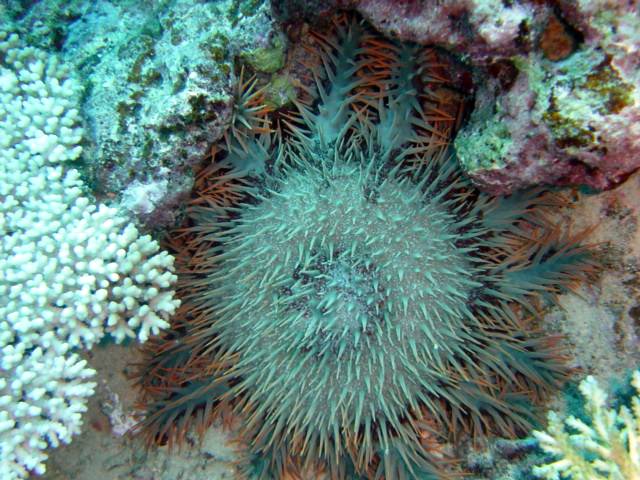
Crown-of-thorns starfish are natural predators of coral. They are nocturnal, emerging from holes and crevices when it gets dark, crawling on coral, and then digesting the coral polyps, leaving behind a bleached white coral skeleton.
These coral eaters are easily recognized by their greenish color, their many arms, and their spiky crown-of-thorns appearance. The spines are terribly sharp and capable of piercing a wetsuit and skin easily. They inflict heavy damage because the starfish is covered with poisonous mucus that can cause very painful wounds, swelling, and sometimes inflammation.
Stonefish
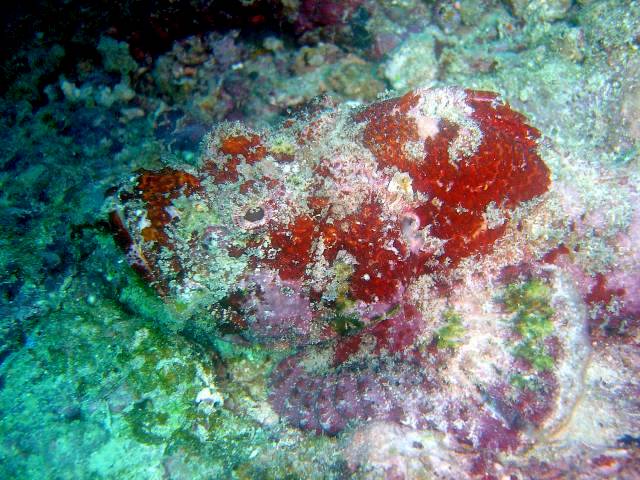
Stonefish belong to the most venomous sea fish in the ocean. They can appear on rocky ground and coral reefs. They have a mottled brown-greenish-orange body and love blending in with their surroundings. Meanwhile, you might swim by one at a yard distance and never know it was there.
Stonefish inject venom with their dorsal fin spines. And they use it defensively. There’s nothing to worry about as long as you commit to the golden safety rule.
Injuries from stonefish are very rare but extremely painful when they occur. To avoid them, be extra careful in known habitats such as rocky and coral-rich areas. Stay alert and watch where you place your feet. If the water is murky and you can’t see anything, shuffle your feet rather than lift them. Protective water shoes can shield your feet. Stick to sandy beaches where they are less likely to be present.
Scorpionfish

Scorpionfish are relatives of stonefish, as they both belong to the scorpionfish family. Scorpionfish are difficult to spot because their excellent camouflage allows them to blend in perfectly with their surroundings.
These fish know exactly that no one can do anything to them. So they sit quietly and motionless and only swim away when you nudge them, which is not to be done due to the multitude of spines, a single one being enough to inject a venom potent enough to conclude your underwater venture with excruciating pain.
Lionfish
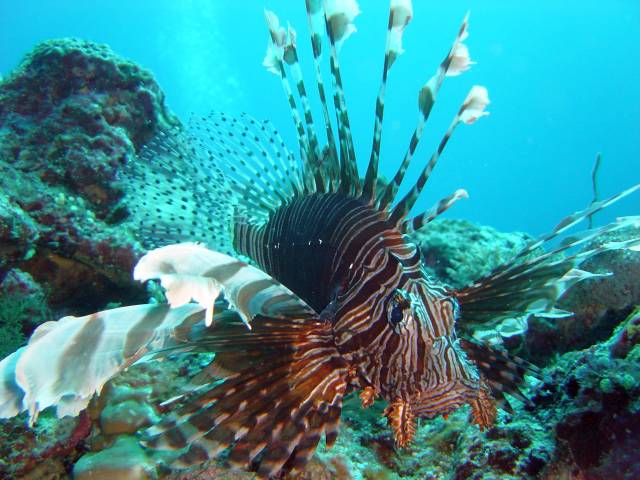
A lionfish has maroon and white stripes with stalky pectoral fins. Its appearance alone is a warning signal. They are found amongst coral pinnacles, sandy and rocky bottoms, shipwrecks, and mangroves or seagrass. But you can recognize them in a snap.
The fish spreads its long, venom-filled spines wide when it feels threatened; these should be avoided. Despite the spines, larger predatory fish such as groupers and snappers are known to consume lionfish. In some cases, moray eels and certain species of sharks may also prey on them. As a visitor to the reef, you should be careful and keep your distance; an accidental sting will be very painful.
Rabbitfish
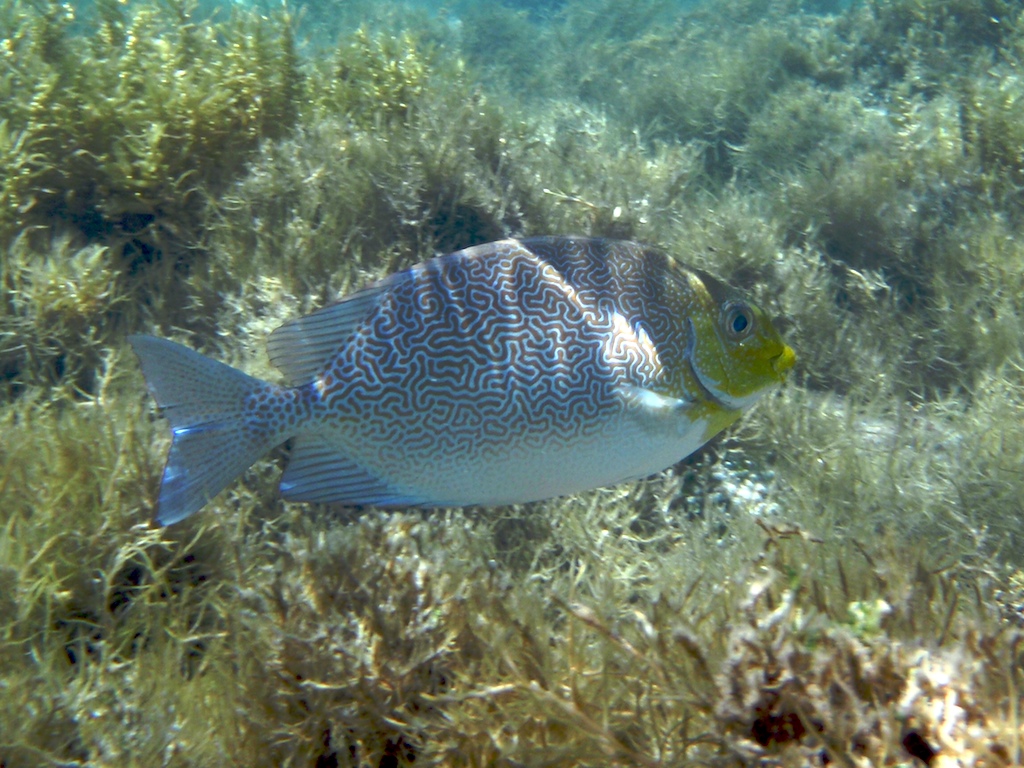
The warm coastal waters and lagoons of the Fiji Islands are the favorite habitats of rabbitfish. They remain active during the daytime and hide in crevices as the night comes, mostly changing their skin color altogether.
They are generally olive-colored with dark splashes and a small rabbit-like snout. There are 25 species in total, characterized by venomous glands on sharp fins. Rabbitfish are not aggressive, so let them mind their own business.
Banded Sea Krait
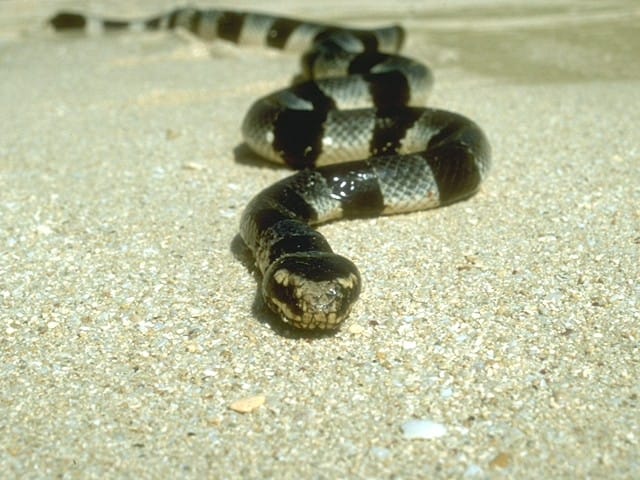
Banded sea snakes, also known as sea kraits (of the genus Laticauda), with their black and white stripes, are very common venomous snakes in the Indo-Pacific.
There are two subspecies of these sea kraits in Fiji: the yellow-lipped sea krait (Laticauda colubrina) and the blue-lipped sea krait (Laticauda laticaudata).
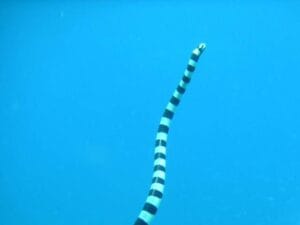
If you are lucky, you can see these snakes when snorkeling or scuba diving. They swim along the coral reefs where they inspect small holes and crevices in between the corals in search of small eels and fish. When prey has been successfully found, the snake will immobilize its victim with its highly potent venom, which is one of the most venomous snake venoms in the world.
Sea snakes are semi-aquatic marine creatures. They hunt for food in the water on reefs and return to land to digest their prey, rest, and reproduce. They can also often be found on land in the undergrowth and bushes near the beach.
If you see a banded sea snake, then just watch it from a distance and don’t touch it. They are normally docile and will not bite humans unless roughly handled and feel threatened.
Stingrays
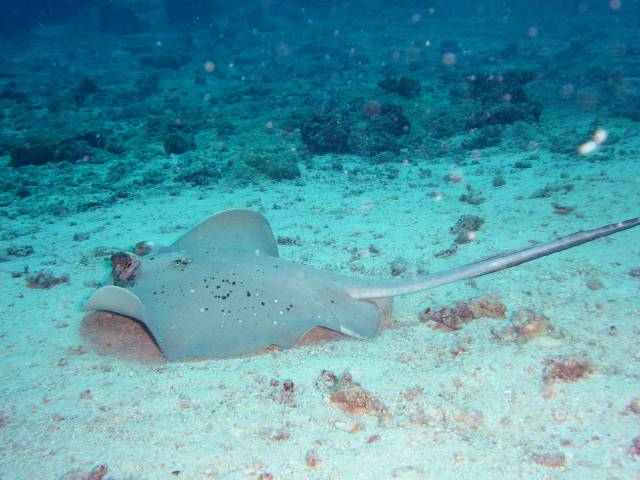
Stingrays are cartilaginous fish with an intriguingly flat body and a long, whip-like tail. It almost looks like a sliding pancake. The danger comes from this long tail, which has several barbed blades that introduce a potent poison into a wound when it stings.
Stingrays live and hunt on the seabed. When resting, they often lie on the bottom covered with sand and move little or not at all, trusting their camouflage. Since the eyes lie at the top, it observes the surroundings, with its tail, it can give a nasty blow if it feels attacked.
Accidents with stingrays happen when you walk very quietly in shallow water and startle a ray lying in the sand. So don’t sneak quietly through the water, make a little noise and shuffling with your feet, that can be enough to get a ray to swim away.
Sea Urchins
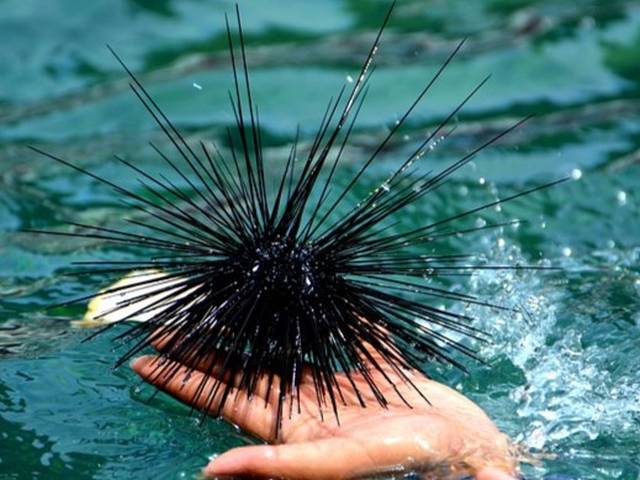
Sea urchins are a large family that dwells in coral reefs. They are beautiful animals from a safe distance, stay watchful of their shiny spines. If you’re punctured nonetheless, get instant surgical treatment to remove the spines.
Most are not poisonous but extremely painful when pricked because the spines are so finely tipped and often penetrate deep into the flesh. Also, the intensity of pain varies with species.
A sea urchin species that occurs throughout the tropics and also in Fiji is the flower urchin. This species can inflict a very painful sting and transmit a venom that can lead to intense, debilitating pain with muscle paralysis, breathing problems, numbness, and disorientation. Luckily, accidents are very rare, and in some parts of the tropics, sea urchins are even collected for consumption.
Cone Shells

Cone shells, or more exactly Cone Snails, are predatory mollusks that hunt and kill their prey with venom injected through a harpoon-like hollow tooth growing at the end of the tongue (radula).
The shell venoms are complex mixtures of so-called conotoxins. These act on the nervous and respiratory systems after entering the body. Make no mistake – it can be fatal to humans.
Accidents with cone shells are very rare, but they do happen. The shells are washed up on the beach or found while snorkeling. When the gastropod senses movement, it usually retreats quickly into the shell. When unwary shell collectors find a cone shell, they may think the shell is empty and pick it up and put it in their pockets. In the dark, the animal will come out and start exploring, and a sting may occur.
Fire Coral and Stinging Hydroids
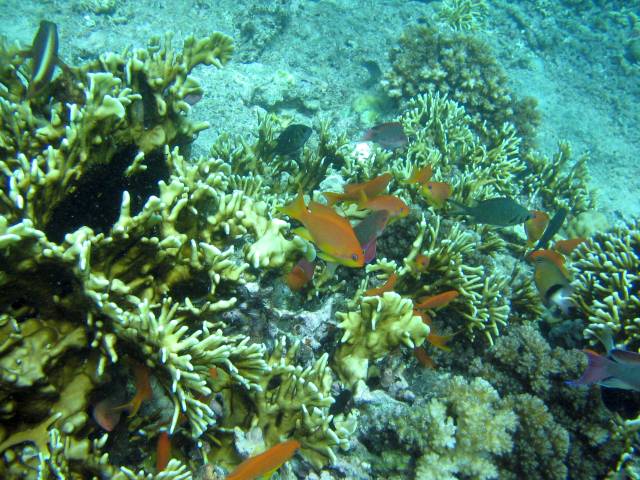
Fire corals are not true corals but a kind of hydroid. In fact, they’re more closely related to the bluebottle than to stone corals. When they release stinging toxins into one’s tissues, it proves that the fire part is real. The sting is followed by rash and inflammation.
Fire corals cling to rocks, disguising themselves as a rather harmless selfie spot. You can identify them with their brownish-golden color and protruding stingers. Steer clear to such a colony.
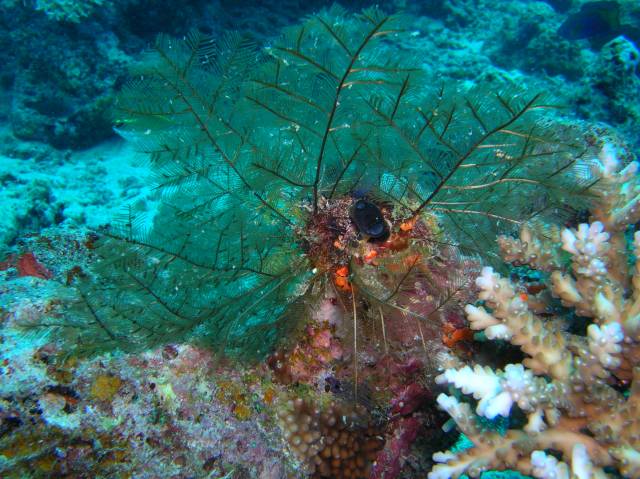
Stinging hydroids (Aglaophenia cupressina) are widespread on coral reefs. They are small colony-forming polyps also known as Sea Fern, or Feather Hydroid, probably due to their appearance of branches of feather/fern-like colonies. When accidentally touched, the nematocyst releases a venom that can trigger an itchy, burning skin rash.
Don’t Touch, Tease, or Trap
Fiji Islands provide heavenly adventures in the ocean. The ultimate guarantee of your safety is the rule of not touching everything you see. Most marine life is harmless, but there are some that have spines and defense mechanisms to keep them from being eaten. If you accidentally touch such an animal, it can get painful, and in the worst case, you end up in the hospital.
Treat all sea creatures with respect and reverence, ask local people about dangerous animals in Fiji, listen to their advice, use protective gear, follow the rules, and don’t go out to sea alone.
The golden rule of safety: Don’t touch anything you don’t know.
